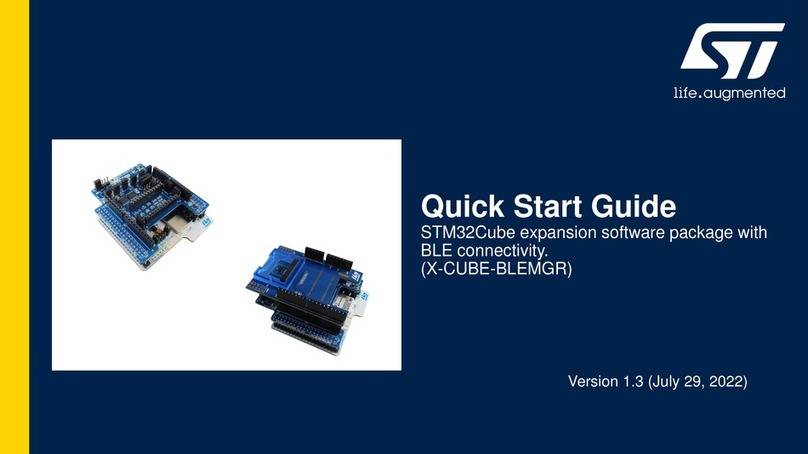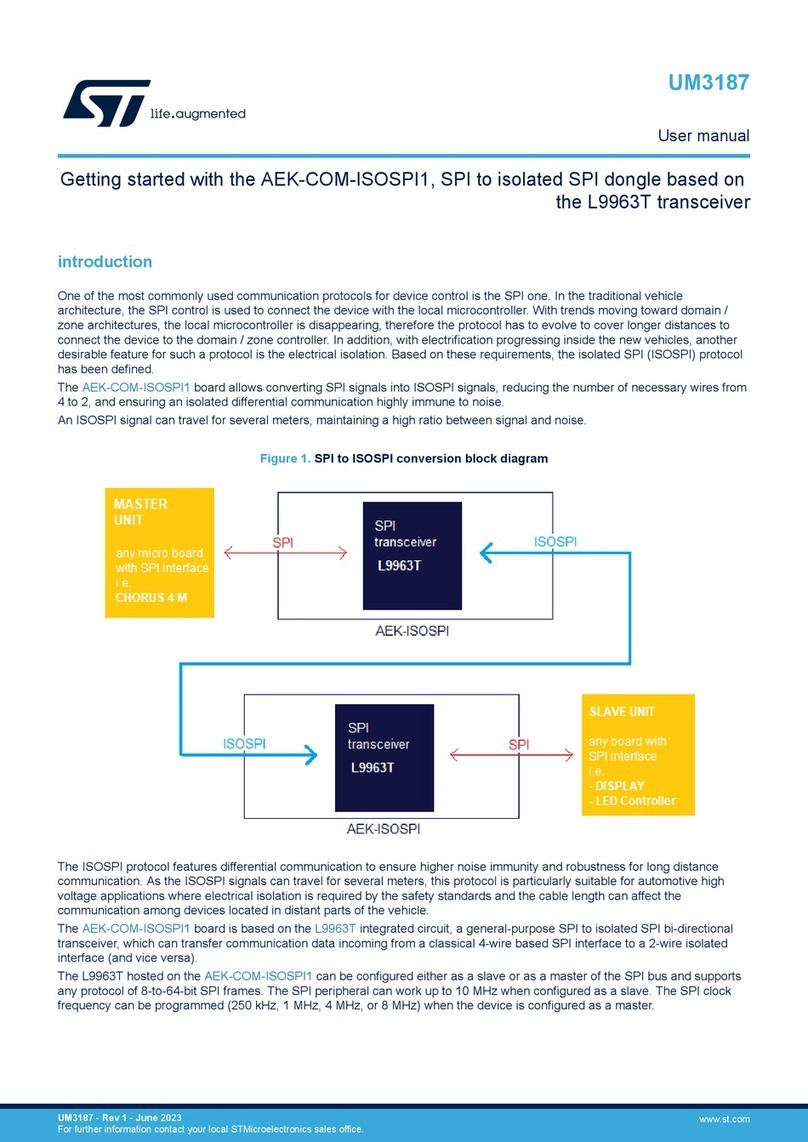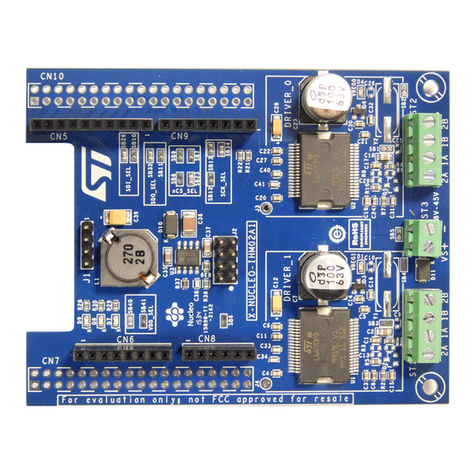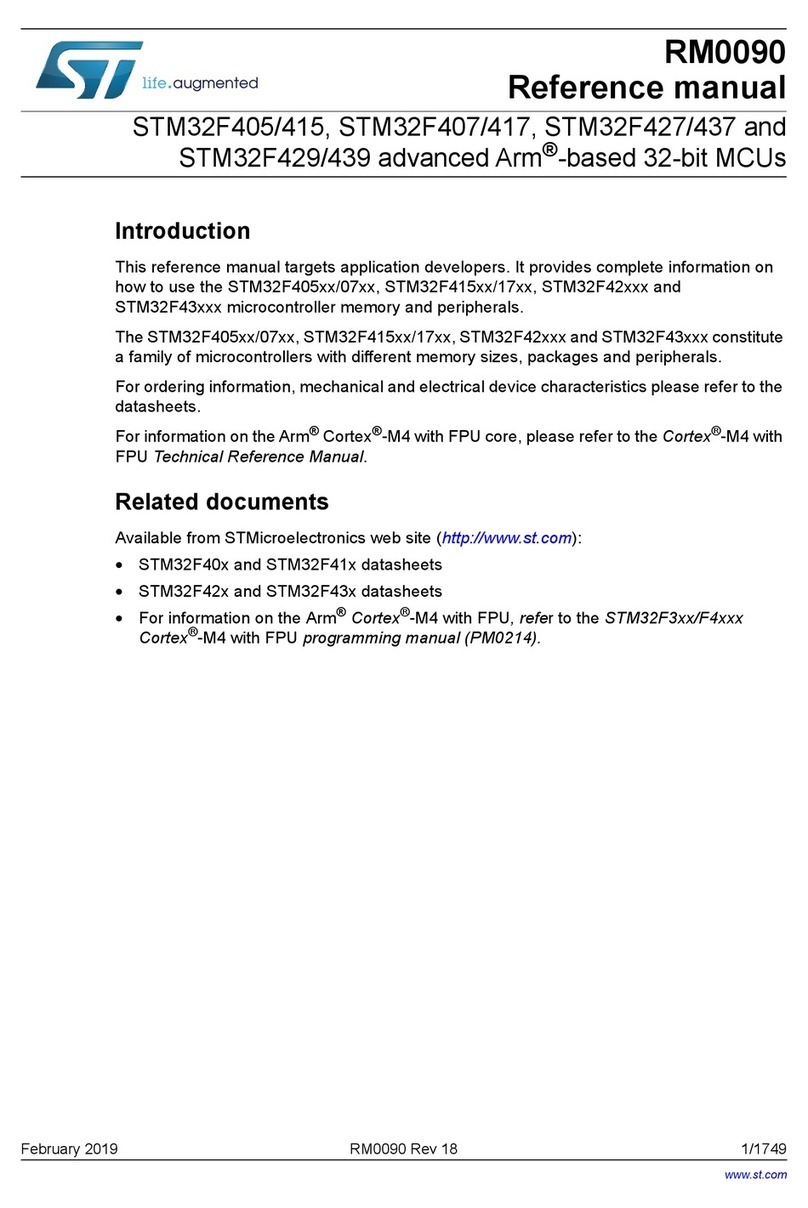ST X-NUCLEO-IOD02A1 User manual
Other ST Computer Hardware manuals
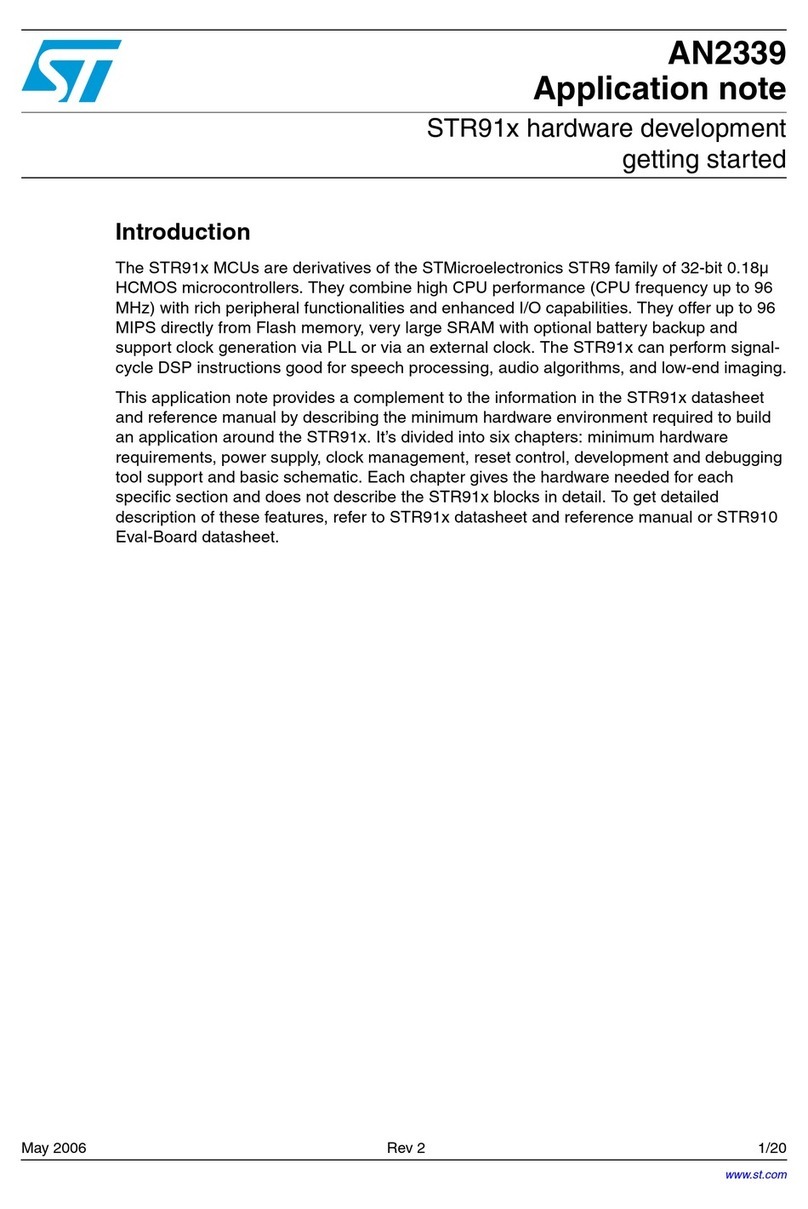
ST
ST STR91 Series Installation and operating instructions
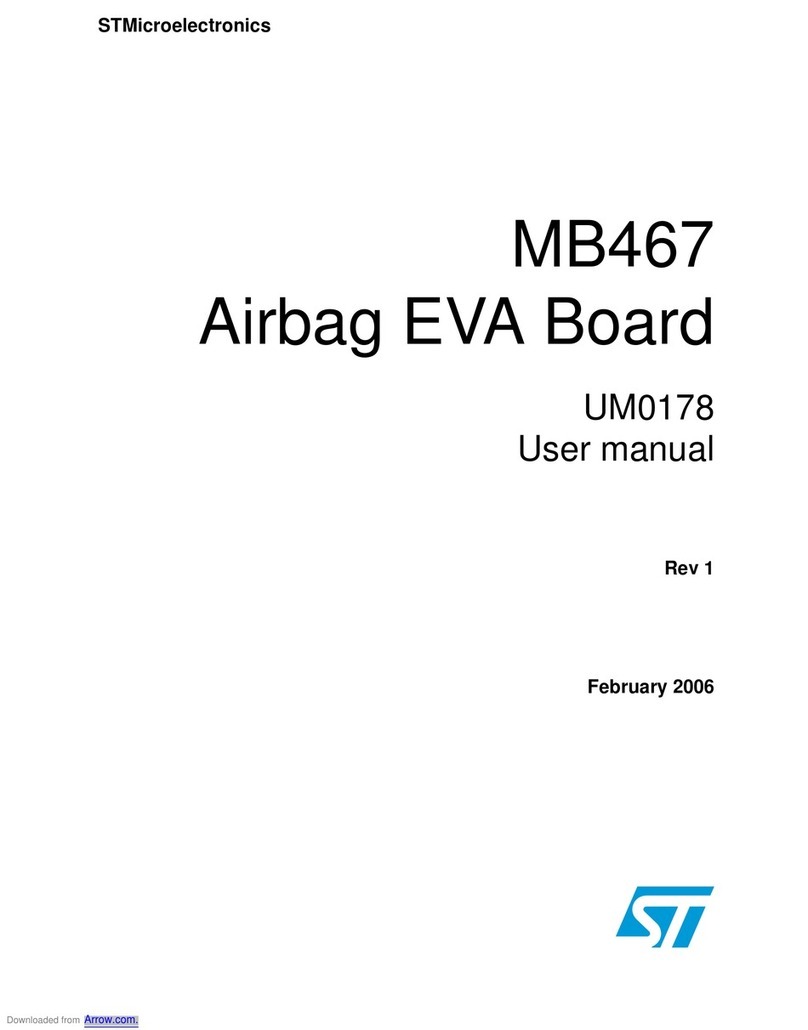
ST
ST MB467 User manual
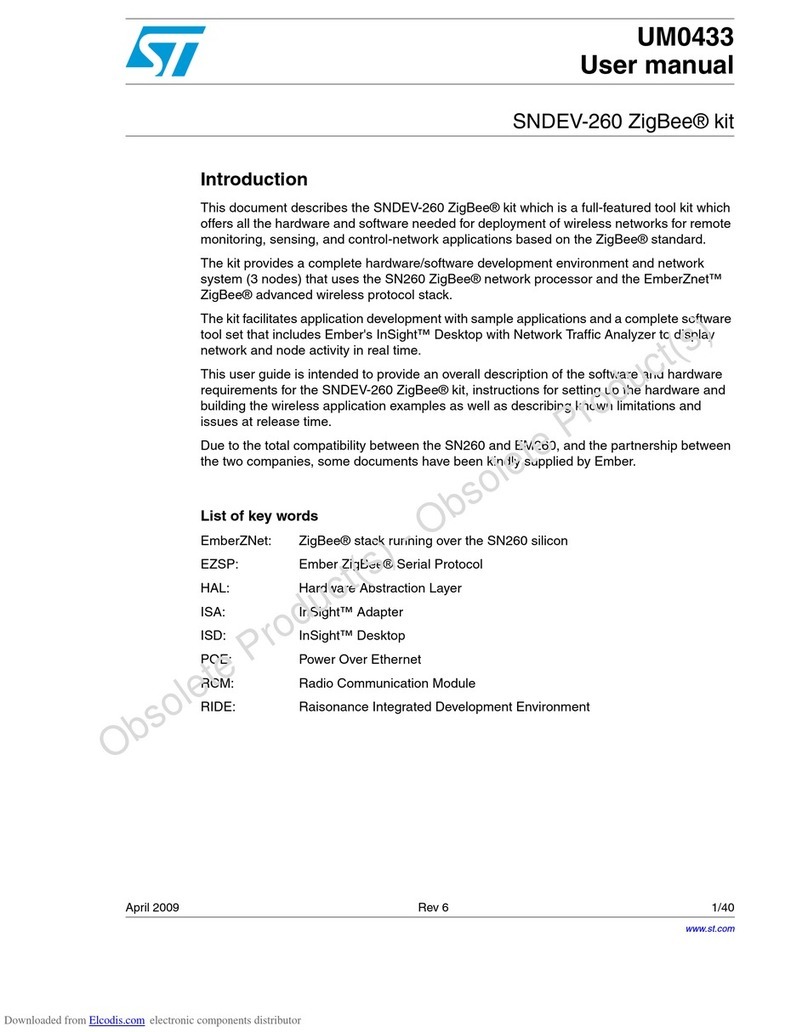
ST
ST ZigBee SNDEV-260 User manual
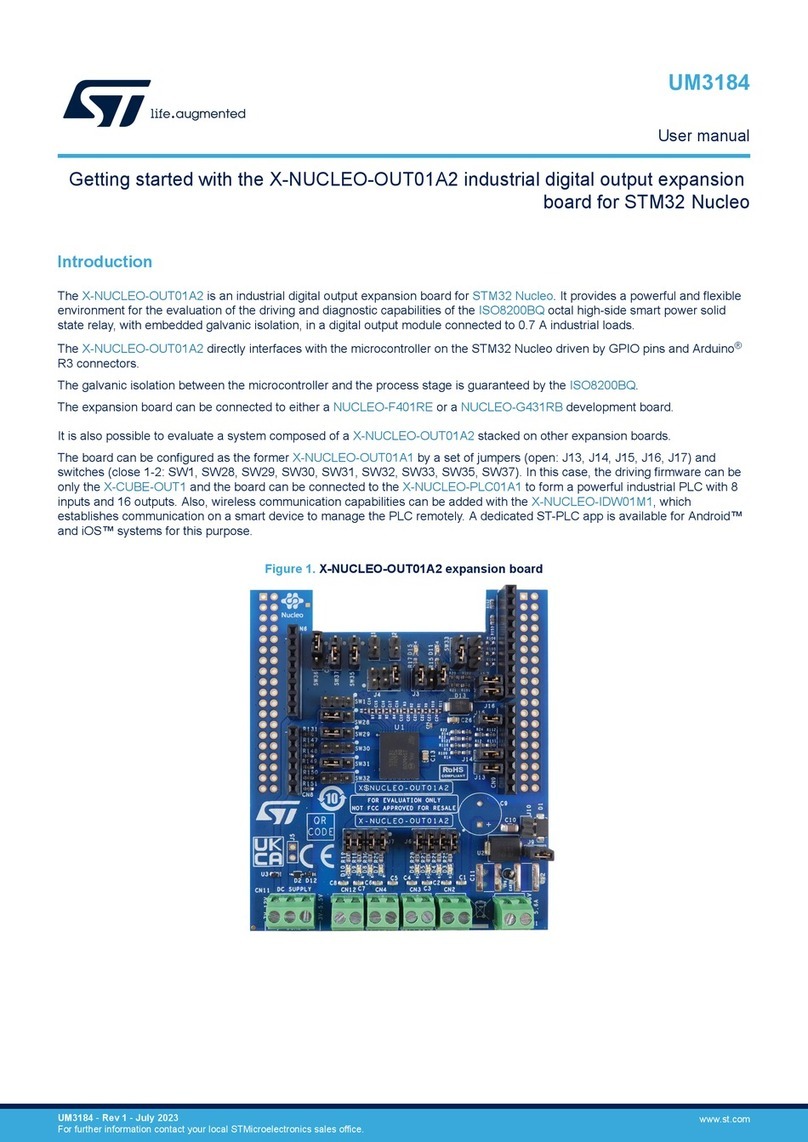
ST
ST X-NUCLEO-OUT01A2 User manual
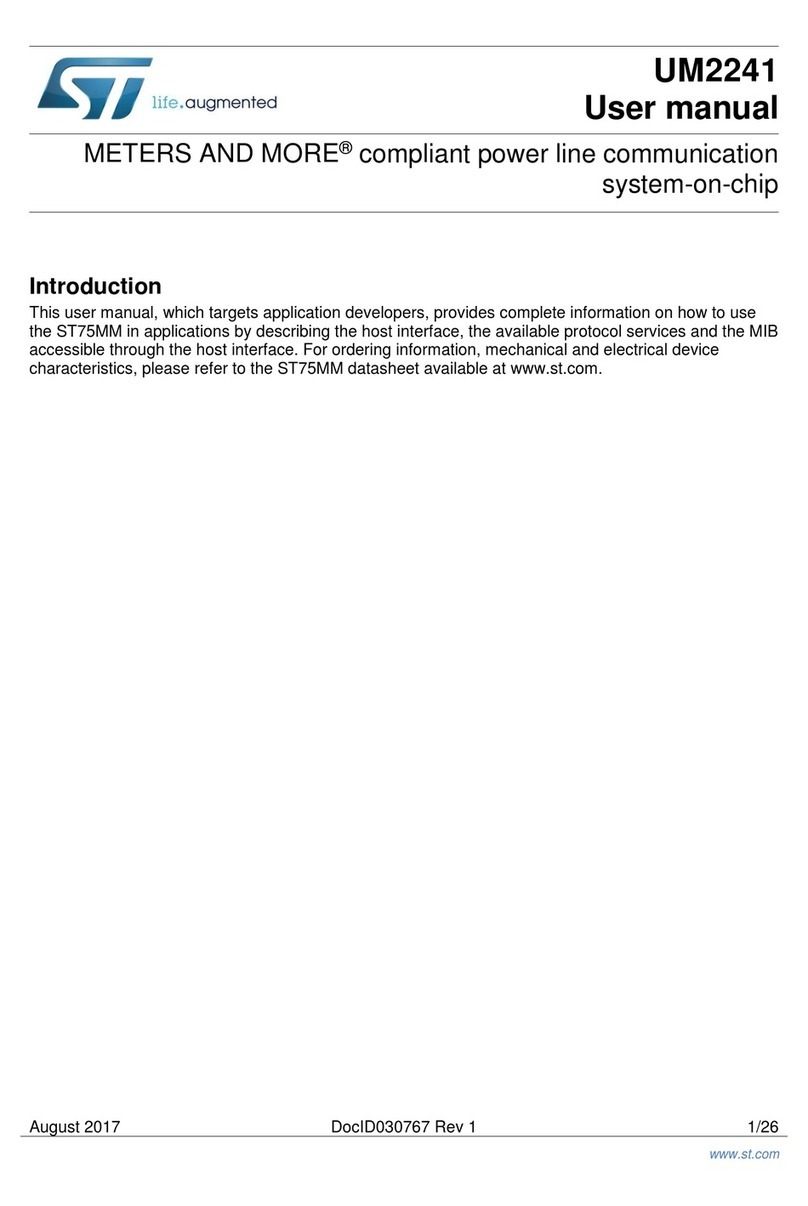
ST
ST METERS AND MORE UM2241 User manual
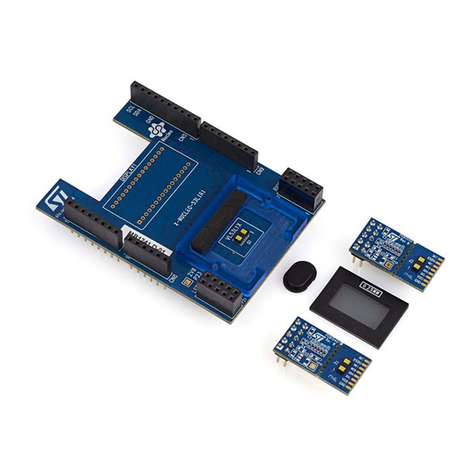
ST
ST X-NUCLEO-53L1A1 User manual
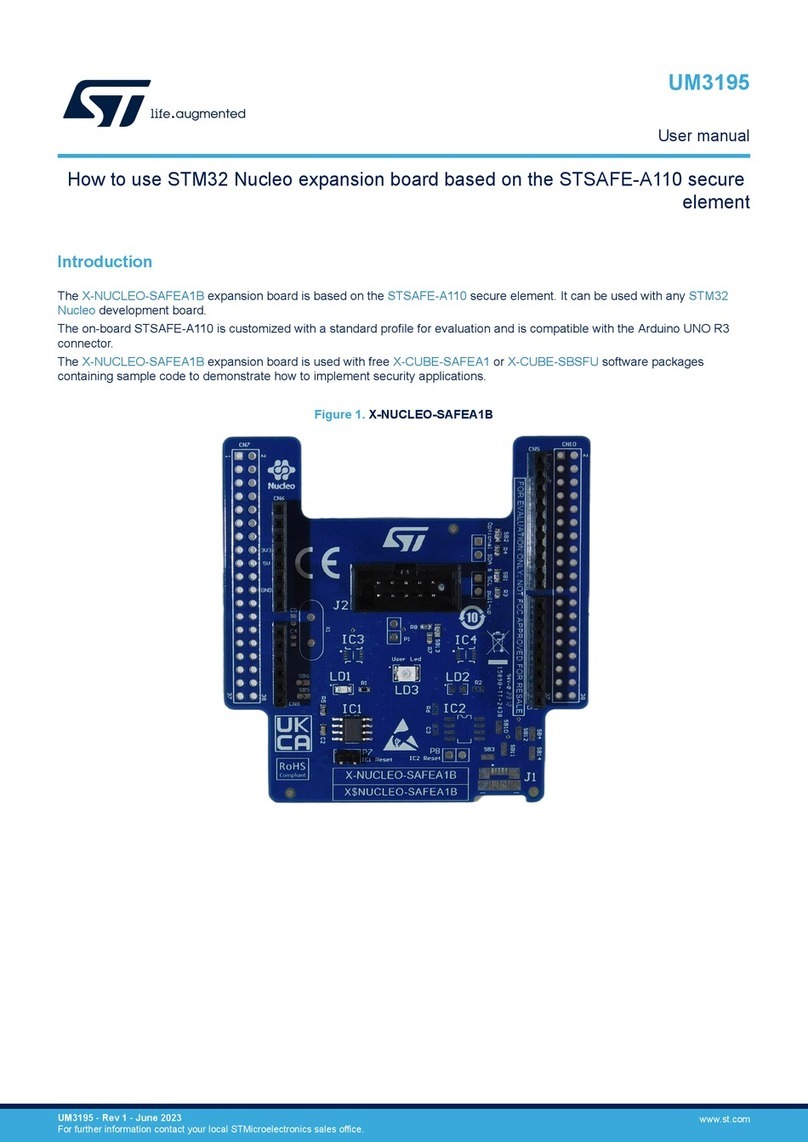
ST
ST X-NUCLEO-SAFEA1B Operating instructions
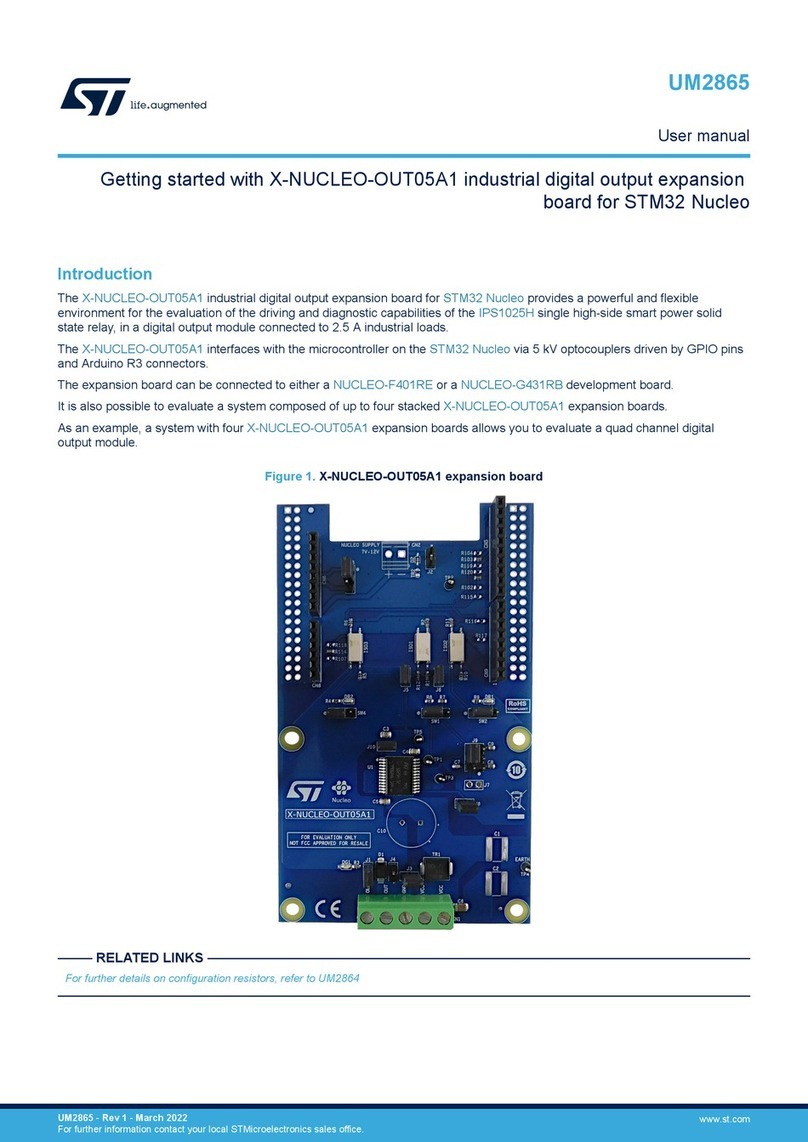
ST
ST X-NUCLEO-OUT05A1 User manual
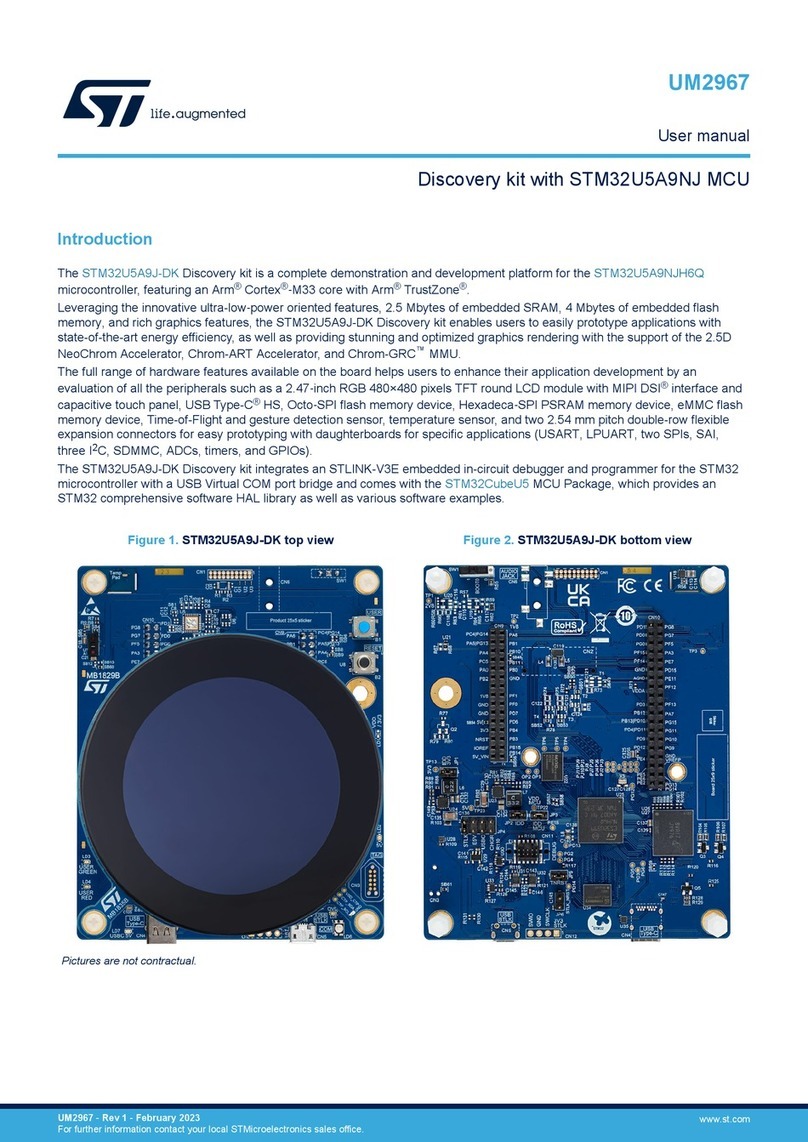
ST
ST UM2967 User manual
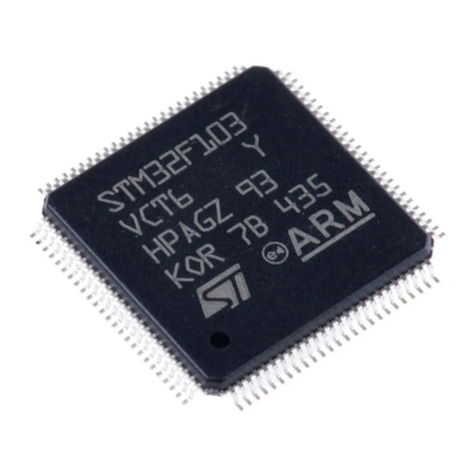
ST
ST ST32M103 Series User manual

ST
ST STEVAL-ST25R3916B User manual
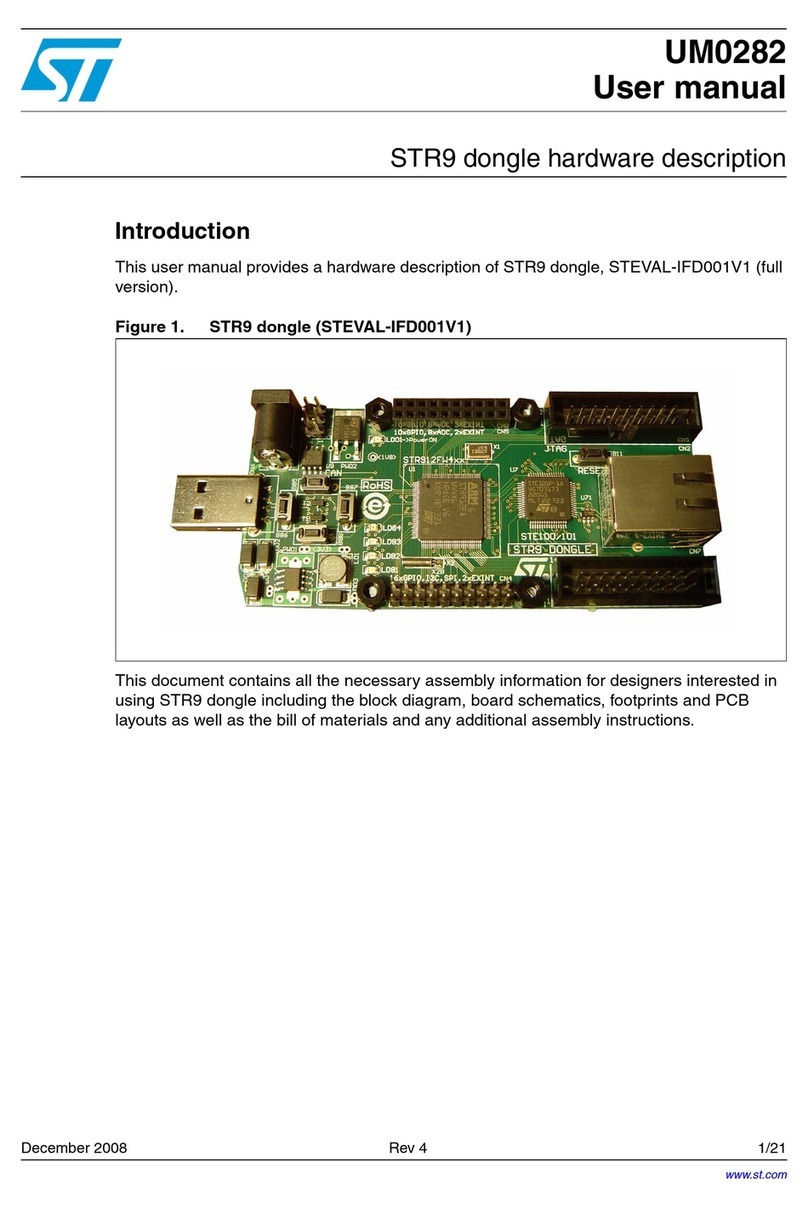
ST
ST STR9 User manual
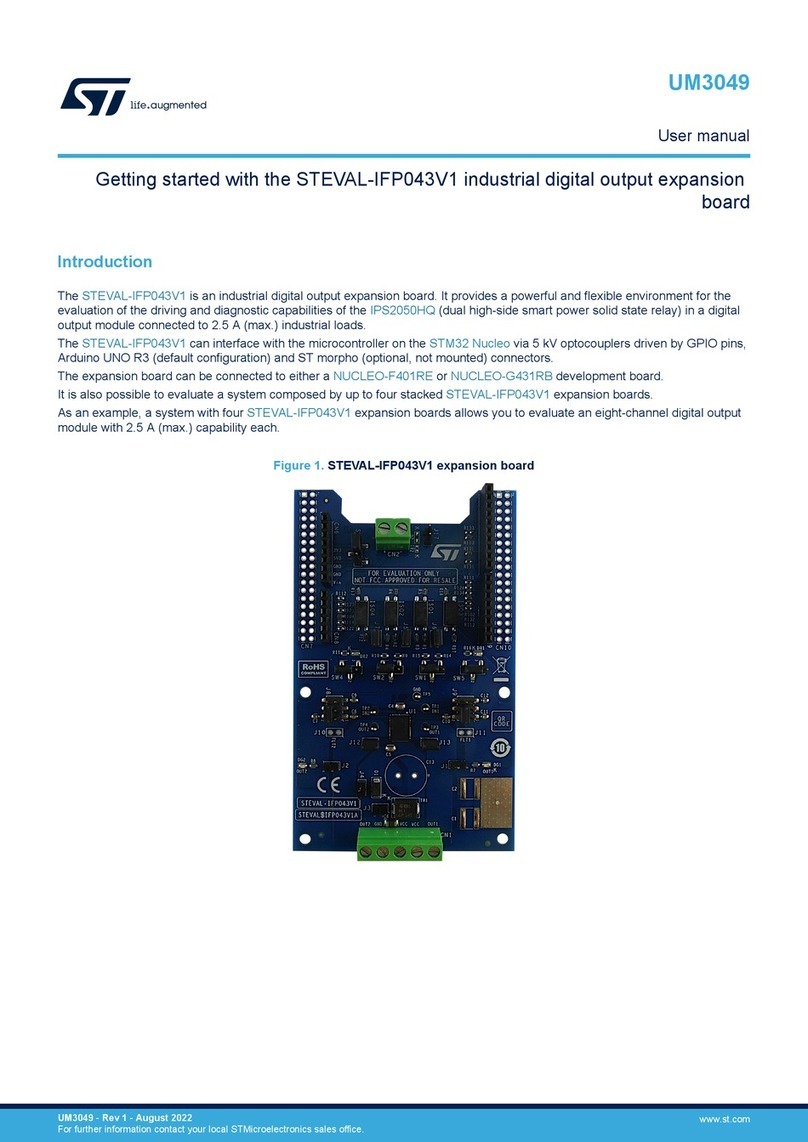
ST
ST STEVAL-IFP043V1 User manual

ST
ST X-NUCLEO-BNRG2A1 User manual
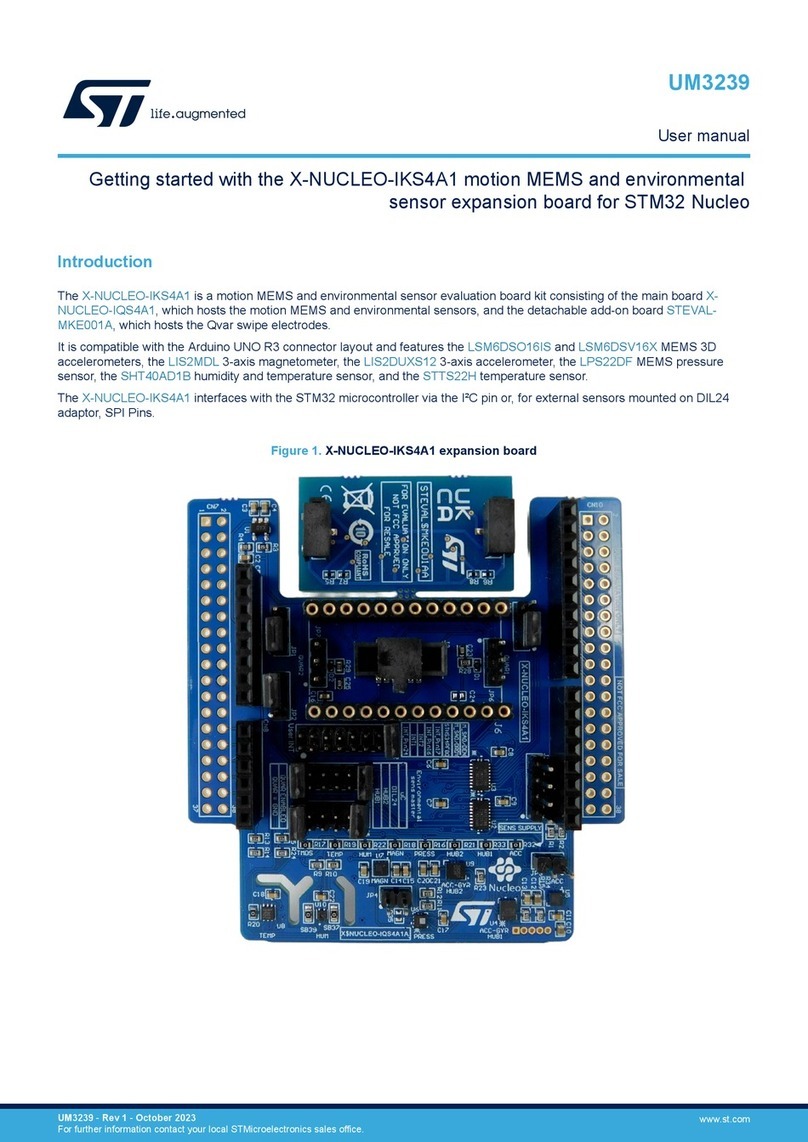
ST
ST X-NUCLEO-IKS4A1 User manual
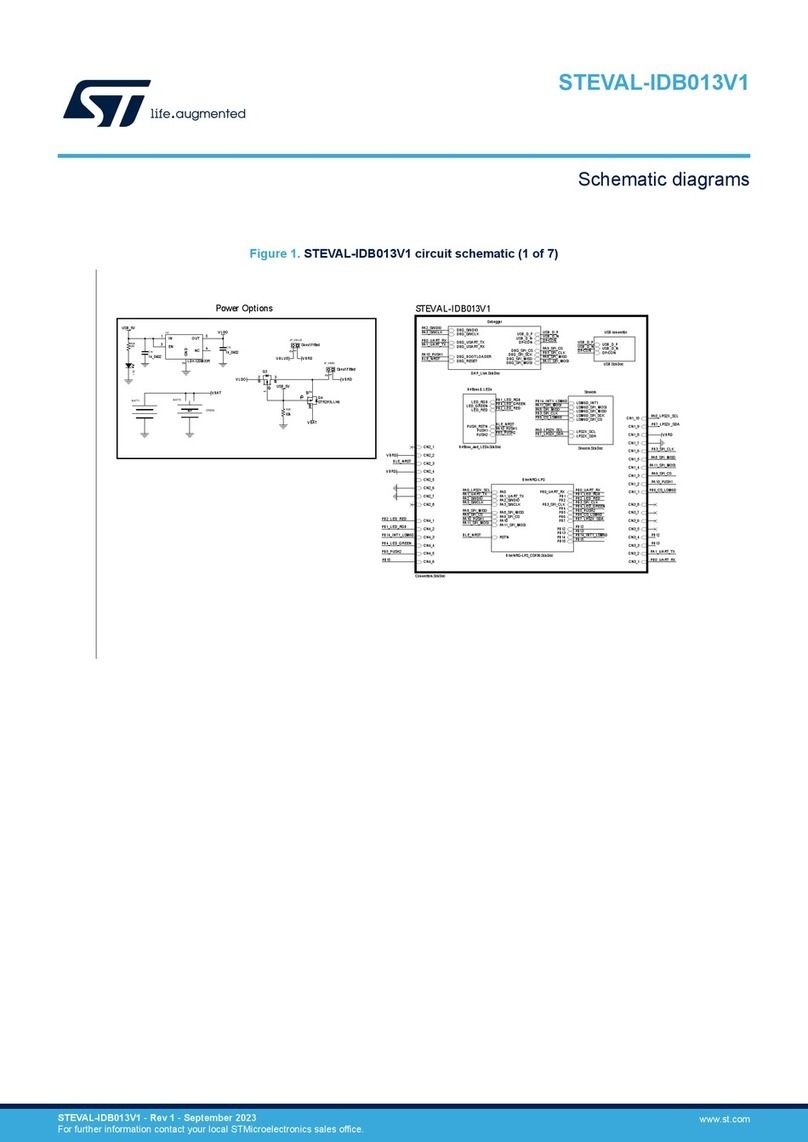
ST
ST STEVAL-IDB013V1 Administrator Guide
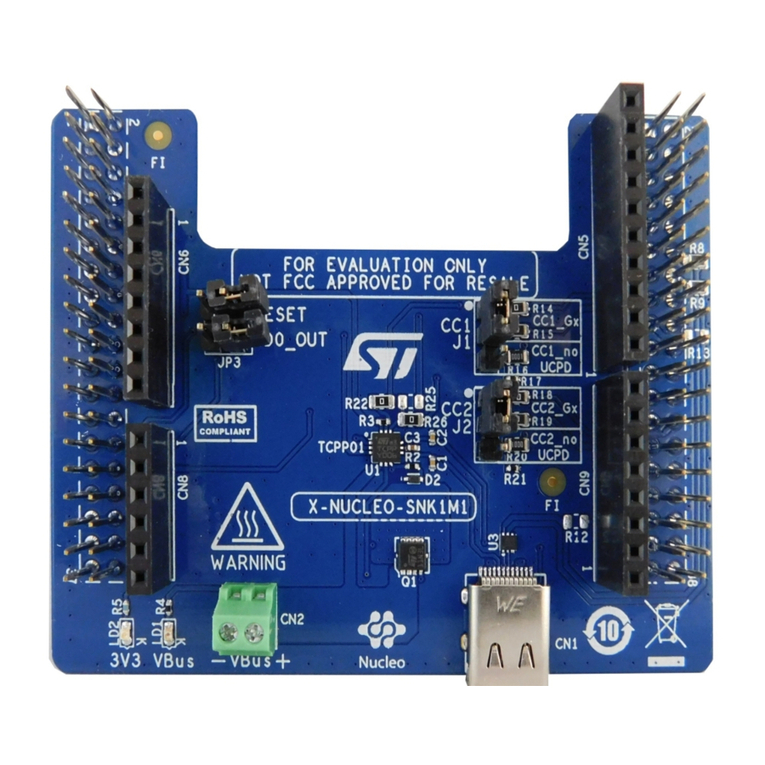
ST
ST X-NUCLEO-SNK1M1 User manual

ST
ST X-NUCLEO-IHM13A1 User manual
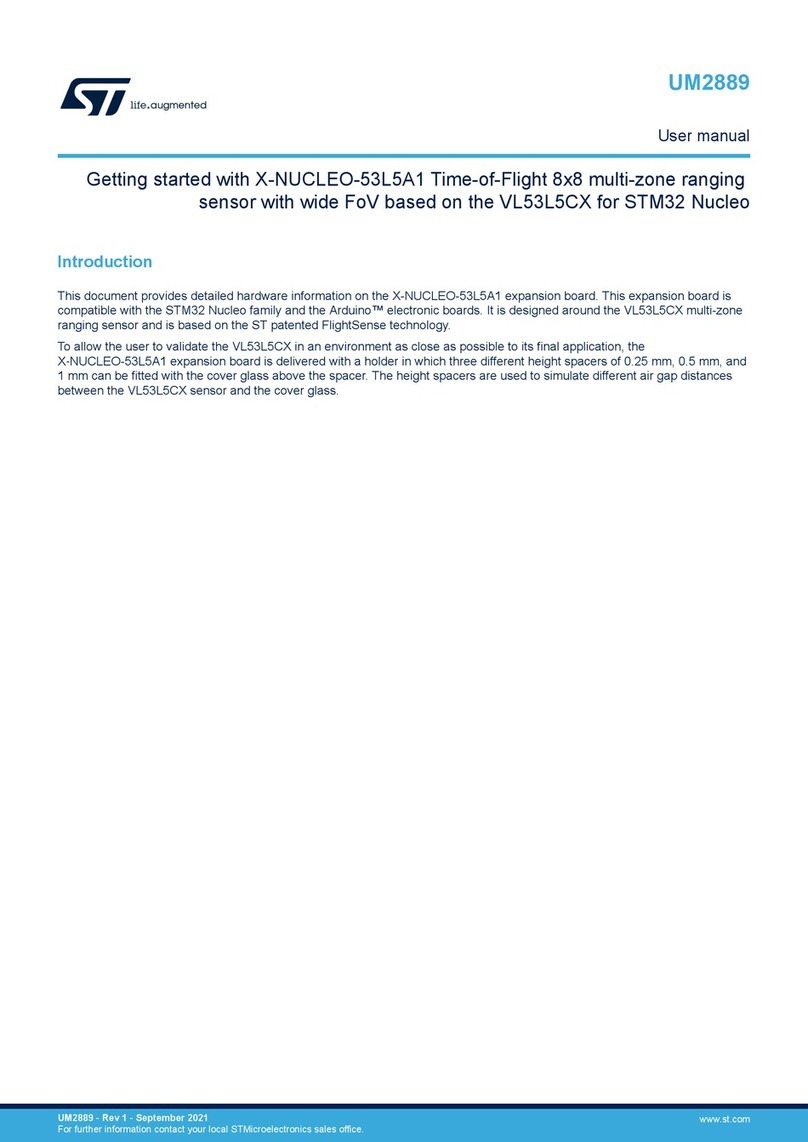
ST
ST X-NUCLEO-53L5A1 User manual
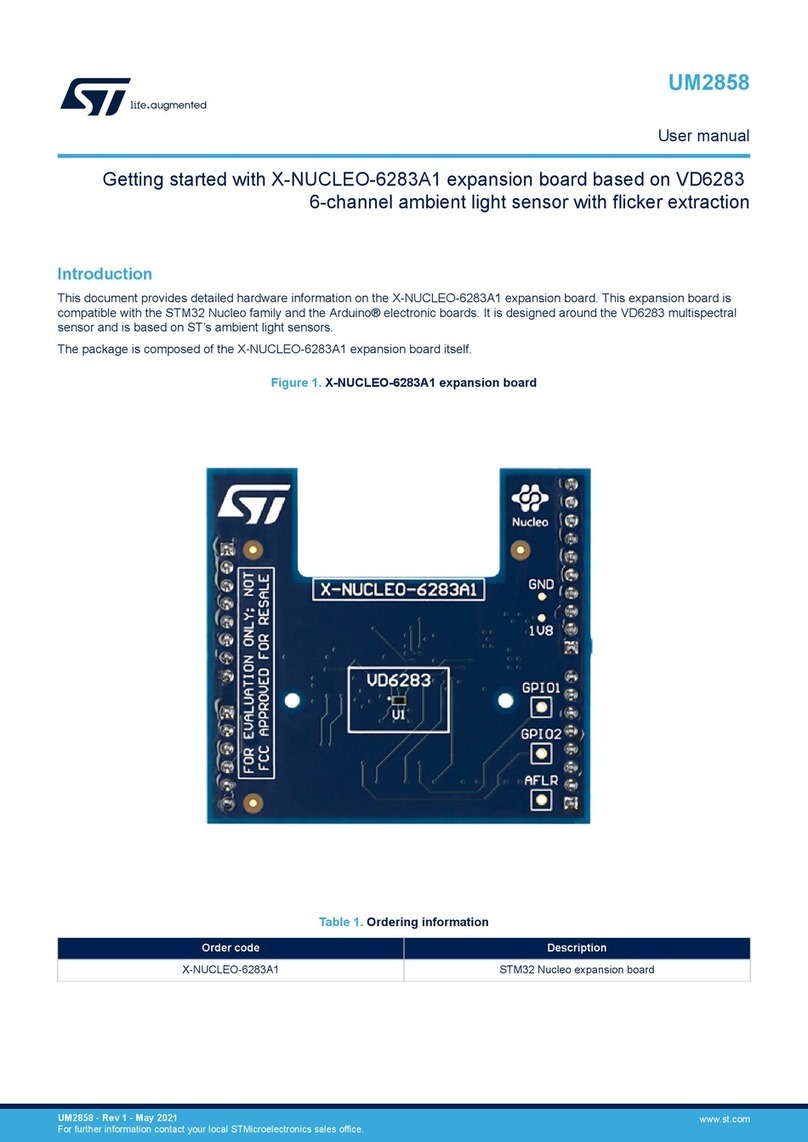
ST
ST X-NUCLEO-6283A1 User manual
Popular Computer Hardware manuals by other brands

EMC2
EMC2 VNX Series Hardware Information Guide

Panasonic
Panasonic DV0PM20105 Operation manual

Mitsubishi Electric
Mitsubishi Electric Q81BD-J61BT11 user manual

Gigabyte
Gigabyte B660M DS3H AX DDR4 user manual

Raidon
Raidon iT2300 Quick installation guide

National Instruments
National Instruments PXI-8186 user manual

Intel
Intel AXXRMFBU4 Quick installation user's guide

Kontron
Kontron DIMM-PC/MD product manual

STEINWAY LYNGDORF
STEINWAY LYNGDORF SP-1 installation manual

Advantech
Advantech ASMB-935 Series user manual

Jupiter
Jupiter RAM PACK instructions

Measurement Computing
Measurement Computing CIO-EXP-RTD16 user manual
